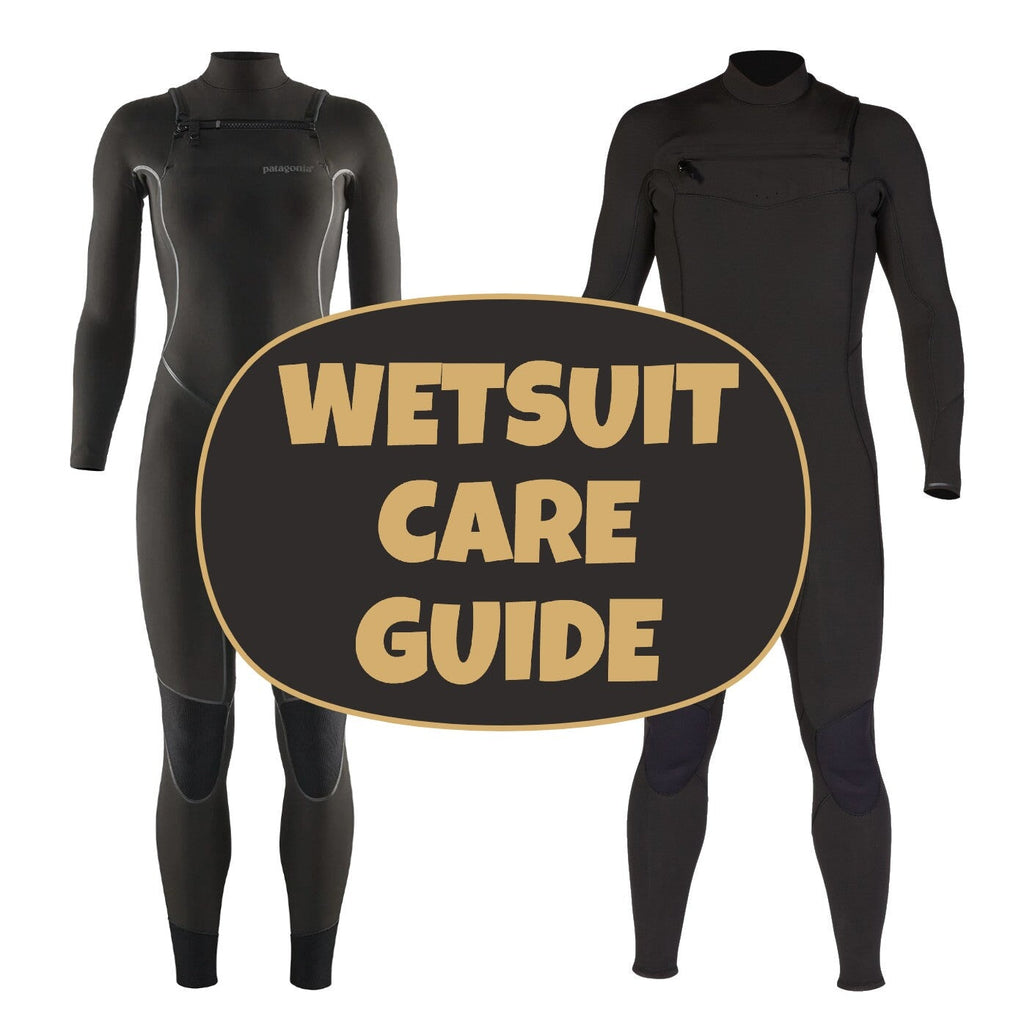
We have put together a Wetsuit Care Guide to help you keep your suit in top condition. Follow our recommendations to ensure you get the maximum life out of your suit. Below I'll run through ways to care for your wetsuit, what to do, what not to do and some important information on warranties.
Wetsuit Care Tips
- Rinse your wetsuit in cool, fresh water after every surf
- Dry your wetsuit in the shade. Leaving your wetsuit out in the sun for hours to dry will speed up the aging process of the neoprene in your suit. Gradually the rubber in the neoprene will become less flexible and brittle.
- Do not leave you wetsuit sitting in a bucket of water for days - even if it’s fresh water. Extended soaking will cause the neoprene and the surrounding fabrics to break down.
- Hot water will also age the rubber in your suit. Not only will it reduce the flexibility of the neoprene, it can weaken the glues used to seal you suit. Warm water is fine but hot showers aren't ideal.
- Don’t wear your wetsuit in a swimming pool. Chlorine & other pool chemicals cause damage to the neoprene & glues in your suit.
- Store your wetsuit carefully when you aren’t using it. Thoroughly rinse and dry your suit, then hang it over a wide hanger. The best way to store a suit is hung by the middle over the lower rung of a hanger. (See picture below)
- Avoid Folding your suit. The creases created can compress and leave marks in the neoprene.
- If you haven't used your wetsuit in a while (eg since last winter) give it a rinse in fresh water then dry before your first use. This will soften the rubber and reduce the risk of damage when you go to use it again.

Do not put your wetsuit in the washing machine
Do not put your wetsuit in the clothes dryer
Do not bleach, dye or paint your wetsuit
Do not iron your wetsuit
If your wetsuit gets really dirty and starts to stink:
Soak your wetsuit in a bucket of warm (not hot) water. Add a little wetsuit cleaner or other mild detergent like wool wash, then give it a good rinse in this detergent solution. The next step is to rinse it again in fresh water, then hang it out to dry.
Problems Generally Covered by Wetsuit Warranties
Wetsuit warranties (may vary slightly from brand to brand) and apply under normal recreational use and proper care of your suit. Generally materials and workmanship are covered for 12 months from the original purchase date. Some price point suits like Need Essentials and Project Blank only offer 6 months on their suits.
This warranty covers:
- The stitching or other bonding methods on all seams
- Any faults in the neoprene or other materials used in the suit.
So if stitching comes loose or starts to unravel, this is something that should be covered by your warranty. Also if the exterior nylon separates from the internal rubber in the neoprene material, this should be covered by your wetsuit warranty.
Problems that are NOT covered by Wetsuit Warranties
The following circumstances are not covered by most wetsuit warranties:
- Fin chops / slices in the material from contact with fins or other sharps.
- Damage from use in chlorinated pools. Unfortunately this does include use at URBNsurf. This often includes fading of materials & failure of glues used in the suits construction. Also loss of stretch & quicker than usual breakdown of materials
- Abrasions from rubbing on hard surfaces
- Fading or damage from sunlight. This often includes fading of materials and failure of glues used in the suits construction. Loss of stretch & quicker than usual breakdown of materials
- Any damage from velcro, either from the suit velcro itself or leg rope, glove closures etc.
- Damage from using the wetsuit for purposes other than it was designed for. An example of this is the seat or elbows of the suit wearing out due to abrasion from activities other than surfing or swimming.
- Repairs, or alterations to any area of the wetsuit by anyone other than an authorized repair facility. With many brands, if you glue it, sew it, cut it or otherwise alter the wetsuit - you void your warranty.
- Warranty claim requests without valid proof of purchase. This must be a receipt of purchase. Credit card or bank statements / transaction records do not count unfortunately - you must have a receipt.
- Damage to the neck, ankle, leg, sleeve or arm area of the wetsuit from getting in and out of it. Damage from over stretching or catching on a sharp finger / toe nail when getting into the suit. Take your time getting into & out of your wetsuit. Don’t tug, stretch or pull the material too hard. If you have trouble getting your feet through cuff on the legs, try putting a plastic bag or a sock on your foot while changing into your wetsuit.

